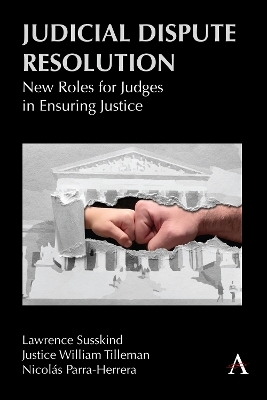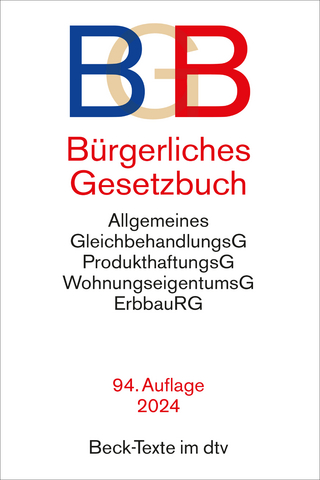
Judicial Dispute Resolution
Anthem Press (Verlag)
978-1-83998-898-1 (ISBN)
This book describes the ways in which judges, using JDR, have been facilitating problem-solving among litigants, and in the process, ensuring more just outcomes. JDR or judicial dispute resolution is similar to mediation (or alternative dispute resolution – ADR, as it is sometimes called), but it is provided by a judge, not a private mediator. Very little has been written about JDR, especially in Canada where it has been pioneered for several decades, because all the records have remained confidential. The story can now be told because the authors were given exclusive access to the records and the parties (including the JDR judges) in nine illustrative cases.
The authors provide a complete Teaching Appendix summarizing the JDR cases from the standpoint of a variety of legal specialties, while highlighting the differences between JDR and ADR.
Lawrence Susskind is Ford Professor of Urban and Environmental Planning at the Massachusetts Institute of Technology (MIT), Co-founder and Vice Chair of the Program on Negotiation at Harvard Law School, and Founder and Chief Knowledge Officer of the Consensus Building Institute. William A. Tilleman, LL.B., J.D., LL.M, S.J.D., is federally appointed judge (2009–2021) and Chamberlain Fellow in Legislation, Columbia University. Nicolás Parra-Herrera is S.J.D. candidate at Harvard Law School, Graduate Fellow at the Program on Negotiation, Harvard Law School, and Visiting Professor at Universidad de los Andes (Colombia).
Foreword; Chapter 1: Introduction; Chapter 2: Judicial Dispute Resolution (JDR) around the World; Chapter 3: The History of JDR in Canada; Chapter 4: JDR’s Response to the Weaknesses of Litigation; Chapter 5: ADR v. JDR; Chapter 6: JDR Produces Satisfactory Results: The Divorce Case; Chapter 7: Advantages and Disadvantages of JDR; Chapter 8: Justice and Fairness in JDR The Motor Vehicle Accident with Pedestrian Case; Chapter 9: Types of Judges: Skill, Temperament, and Attitude in JDR Temperament in an Estate Dispute Case; Chapter 10: Confidentiality and Privacy in JDR; Chapter 11: Which Cases are Unsuitable for JDR?; Chapter 12: Juggling Complexity in JDR The Falling Rocks Case; Chapter 13: Divergent Interests of Adversarial Lawyers and Their Clients; Chapter 14: JDR and the Role of Precedent The Medical Malpractice Case; Chapter 15: The Importance of a Robust JDR Intake System; Chapter 16: The Chief Justices and How to Triage Special (SPEC) JDR Cases; Chapter 17: Specialized JDRs (SPECs) A Look at Three Cases and the Impact of the COVID-19 Pandemic; Chapter 18: How to Prepare for and What to Do During a JDR The Power Pole Case; Chapter 19: The New World of Online Dispute Resolution (OJDR); Epilogue: The Future of JDR; Bibliography; Appendix; Teaching Guide; Case Studies; 1. The Contaminated Land Case; 2. The Divorce Case; 3. The Motor Vehicle Accident with Pedestrian Case; 4. Temperament in an Estate Dispute Case; 5. The Negligent Land Transfer Case; 6. The Falling Rocks Case; 7. The Medical Malpractice Case; 8. The Power Pole Case; 9. The Well Fire Case; Index
| Erscheinungsdatum | 20.02.2023 |
|---|---|
| Verlagsort | London |
| Sprache | englisch |
| Maße | 153 x 229 mm |
| Gewicht | 454 g |
| Themenwelt | Recht / Steuern ► EU / Internationales Recht |
| Recht / Steuern ► Privatrecht / Bürgerliches Recht ► Zivilverfahrensrecht | |
| ISBN-10 | 1-83998-898-3 / 1839988983 |
| ISBN-13 | 978-1-83998-898-1 / 9781839988981 |
| Zustand | Neuware |
| Informationen gemäß Produktsicherheitsverordnung (GPSR) | |
| Haben Sie eine Frage zum Produkt? |
aus dem Bereich


